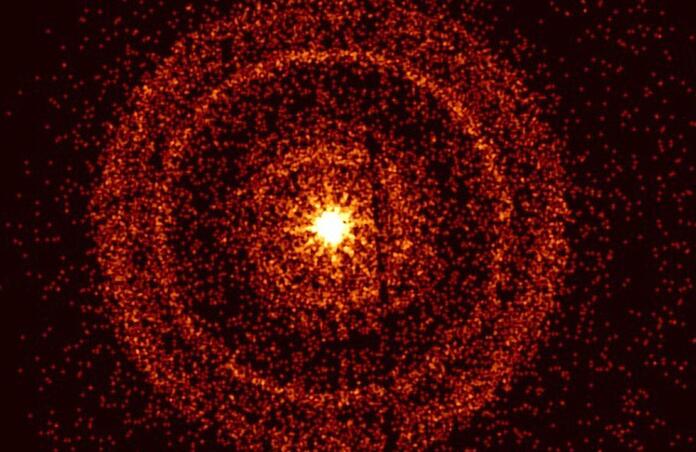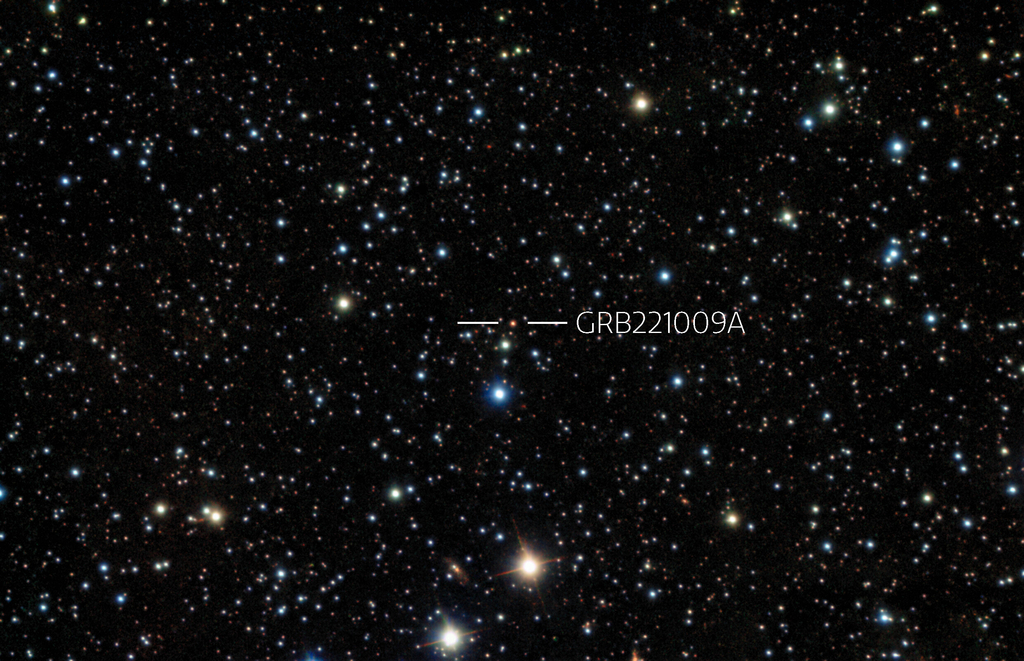Astronomers Detect Most Powerful Explosion Yet

Astronomers have observed the brightest flash of light ever seen, released from a gamma-ray burst (GRB) which occurred 2.4 billion light years from earth. The intense flash was first detected on the morning of the 9th of October by orbiting telescopes, being so bright that it temporarily blinded multiple sensitive gamma-ray space detectors! Its afterglow is still being seen globally at X-ray energies a few hundred times brighter than the brightest afterglows seen previously, making this a once-in-a-lifetime event since the next GRB of this scale might not happen for centuries.
The GRB, dubbed GRB221009A likely belongs to a class of long GRBs, which are the dying phase of a rare group of massive stars that are 30x the size of the sun. The dying star eventually explodes in a supernova and collapses into a black hole. An accretion disk then forms around the black hole where matter falls inside and is spewed out in jets of energy that travel in opposite directions extremely close to the speed of light. As the jets rip through what’s left of the progenitor star, X-rays and gamma rays are emitted as they travel through space which can be detected on earth as flashes. The GRB originated in the direction of the Sagitta constellation, with the Chinese observatory LHAASO reporting the spectacular flash to have released the highest energy photons an explosion has ever seen at a whopping 18 teraelectron volts- that’s 18 with 12 zeros! In fact, the explosion was so powerful that it affected long-wave radio communications in the earth's ionosphere.

Shortly after the intense flash was seen, news quickly spread and two teams of astronomers started working with staff at Gemini South to carry out the earliest possible observations of the afterglow. Just days after the flash on the 14th of October the groups of astronomers led by graduate students Brendan O’Connor, University of Maryland/George washing university and Jillian Rastinejad, Northwestern University took observations using the Gemini South telescope in Chile, operated by NSFs NOIRLab. The two observations occurred minutes apart, with the first using the FLAMINGOS-2 instrument, a near-IF imaging spectrograph. The second used the Gemini multi-object spectrograph. The images were quickly produced, with Rastinejad stating “Gemini's sensitivity and diverse instrument suite will help us to observe GRB221009A's optical counterparts to much later times than most ground-based telescopes can observe. This will help us understand what made this gamma-ray burst so uniquely bright and energetic”.
High-energy photons originating from distant sources don’t usually survive the long journey to earth since they are absorbed by material along the way. Therefore, this unique event will allow astronomers to look back 2.4 billion years into the past and uncover new insights into the formation of black holes, and address fundamental questions about these phenomena. For example, supernova explosions are believed to be responsible for the production of heavy elements such as gold and platinum, so the explosion will give astronomers the opportunity to discern if the origin of these elements comes primarily from neutron star mergers, or rather from collapsing stars that trigger these GRBs.
X-ray images have also uncovered something quite interesting – a series of concentric rings can be seen around the location of the flash, but these features aren’t physically related to the explosion. These rings appear as X-rays scatter off dust grains in interstellar clouds located in our galaxy. Additionally, the rings are particularly prominent due to the location of the GRB being close to the galactic plane, which is dust-rich. Scientists can analyse these features and study the size, composition and spatial distribution of grains in great detail.
In the coming weeks, scientists will look out for capturing the supernova as it brightens to reach its peak around 2-3 weeks after the explosion to confirm the current hypothesis about its origin.
--
Cover image: NASA/Swift/A. Beardmore University of Leicester
Image credit: International Gemini Observatory/NOIRLab/NSF/AURA/B. O'Connor (UMD/GWU) & J. Rastinejad & W Fong (Northwestern Univ) Image processing: T.A. Rector (University of Alaska Anchorage/NSF's NOIRLab), M. Zamani & D. de Martin (NSF's NOIRLab)
